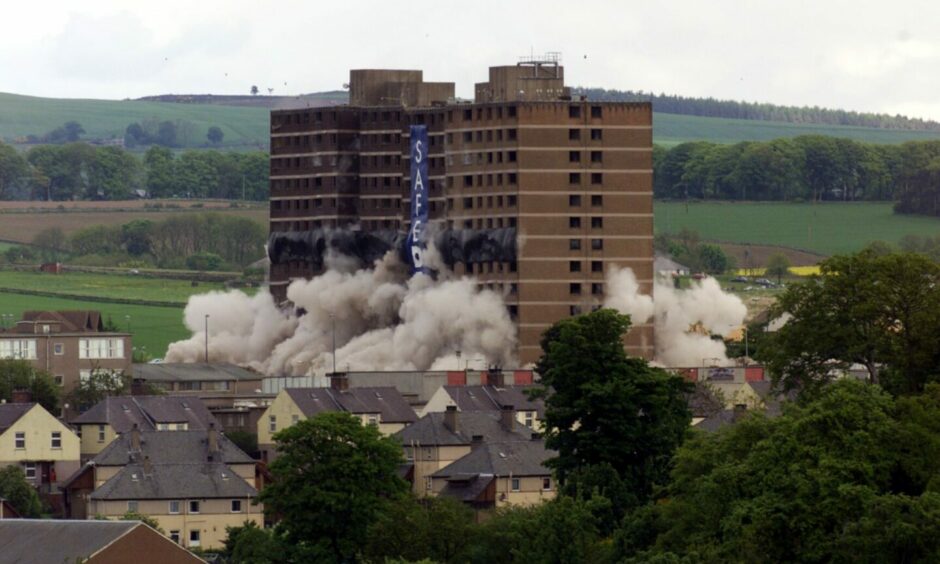
A little bit of history was brought crashing down when the multi-storey block of Whitfield and Quarryfield Courts was reduced to rubble on May 25 2003.
It was the first of Whitfield’s two tower blocks to be flattened.
Few tears were shed.
Building “up” was hailed as the way forward in town planning in the 1960s.
But this was not to prove the case.
Some residents felt isolated in the concrete towers, and few multis seemed to engender a feeling of community in the tenants.
The birth of the Whitfield estate
Dundee Corporation wanted to tackle slum dwellings after the war and build new homes to tackle overcrowding in a city that was running out of space.
Negotiations began to purchase Whitfield, Longhaugh and Kellyfield in 1954.
Work on the 18-phase building programme began in 1965, running until 1971, to provide 4,500 homes including the hexagonally-shaped Skarne estate, which became infamous.
People moved in droves from the decaying heart of the city.
The multi-storey blocks comprising 360 flats were built in 1969.
There were actually two blocks, making four courts.
These were the 16-storey Quarryfield and Whitfield Courts and the neighbouring tower block which housed Greenfield and Kellyfield Courts.
Living conditions rapidly deteriorated.
Barely 20 years after it was built, the Whitfield housing estate was one of the worst in Scotland and there was increasing reluctance to move there.
Significant work was undertaken to give the vast estate a new identity so clearance of unwanted homes — officially known as twilight areas — began in the early 1990s.
Whitfield’s multi-storey blocks somehow survived being demolished.
As disillusioned families moved out for more traditional accommodation, the half-empty blocks attracted drug abusers and vandals, making life a misery for the remaining high-rise dwellers.
Major improvements were carried out to install a concierge system at the Whitfield, Quarryfield, Greenfield and Kellyfield Courts, costing £850,000 in 1996.
Additional expenditure of £75,000 was incurred.
City architectural services officer John Porter cited a list of 12 reasons for the extra cash being needed, which included an item for “aerial protection of work force”.
Scaffolding had been put up and wooden battens laid across it to protect workmen against missiles being thrown from windows at the 16-storey blocks.
As one writer to the Evening Telegraph letters page put it: “Gadgies rule”.
But time was running out
The Dundee skyline changed radically as the council introduced a policy of demolishing unpopular multi-storey housing blocks across the city.
A council working group, comprising councillors, tenants representatives and council officers, was set up to identify and report on housing which was potentially at risk.
Whitfield, Quarryfield, Greenfield and Kellyfield Courts appeared on the shortlist alongside 628 homes being officially classed as at risk of demolition in October 2000.
The Evening Telegraph reported: “The city council presently has just over 20,000 houses and flats, compared to a high point of around 40,000 in the 1980s.
“A combination of tenants purchasing their houses under the right to buy legislation and demolitions of unwanted properties saw the stock fall dramatically in the space of 10 to 15 years.
“Now another 628 properties, including several multi-storey blocks in Whitfield, have been identified for possible demolition over the next three years.
“Four of the multis – Whitfield, Quarryfield, Greenfield and Kellyfield Courts – account for more than 350 of the identified housing units.
“Officers of the council will undertake consultation with tenants to obtain their views about demolishing the houses.
“Subsequently, reports will be submitted to the housing committee.
“In the meantime, the council has decided to stop letting properties at the affected addresses and to seek council tax exemptions for the vacant houses.”
It was a foregone conclusion and the fat lady was singing.
The remaining 145 tenants in the 360 flats were consulted and the 64 residents who responded were in support of the proposal, which would cost £1.6m.
Home loss payments for the remaining 145 would come to £217,500.
Some had been trying for years to find new homes.
The demolition contract was awarded to Safedem Ltd, whose offer of £853,000 was the lowest of the tenders received.
An exact date was set
Quarryfield and Whitfield Courts would be the first to be demolished on May 25 2003 and the neighbouring Greenfield and Kellyfield Courts would follow in April 2004.
Who needed Safedem?
Thieves went on a “campaign of plundering” by stealing more than 20 copper tanks from the vacant flats before they arrived to remove the fixtures and fittings.
Safedem did the rest and spent several months on the site; weakening the steel frame enough to enable it to be brought down to ground level under controlled conditions.
A large exclusion zone was set up before the demolition, which involved the closure of part of Whitfield Drive and Longhaugh Road as well as general restricted access.
The skyline of Whitfield changed forever at 11.30am.
A controlled explosion reduced the multi-storey block to 18,000 tons of rubble.
The Courier reported: “Crowds several hundred strong stood round the exclusion zone to watch the spectacle, which came after six months of careful planning and preparation by Dundee-based demolition experts Safedem.
“Fourteen-hundred detonators controlled the direction of collapse, ensuring the building fell inwards and landed on its own footprint.
“Dundee City Council had advised people to avoid the area due to restricted access round the site and fears over the amount of dust that would be raised.
“The event went as well as the planners could have hoped, however.
“The billowing dust raised by the collapse obscured the sunshine for only a few moments before dissipating in the wind before it reached the onlookers.”
Around 150 personnel were on hand that Sunday morning, including members of several city council departments, the police and the contractor.
Elaine Zwirlein, director of housing for the city council, said: “All the rubble will be crushed and recycled.
“Dundee has a good track record on recycling and all of the rubble will be used for purposes such as road building.”
The concrete monstrosity was gone and Whitfield never looked back.
Since 2006, scores of council houses have been demolished and replaced with hundreds of new homes.
The core of the estate has been reborn.
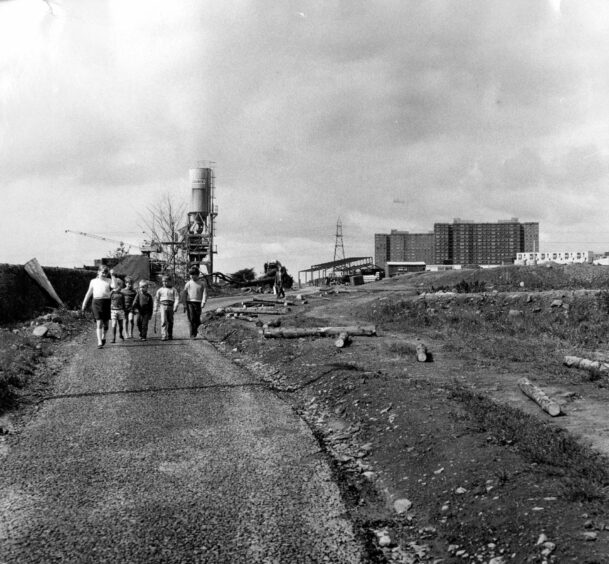
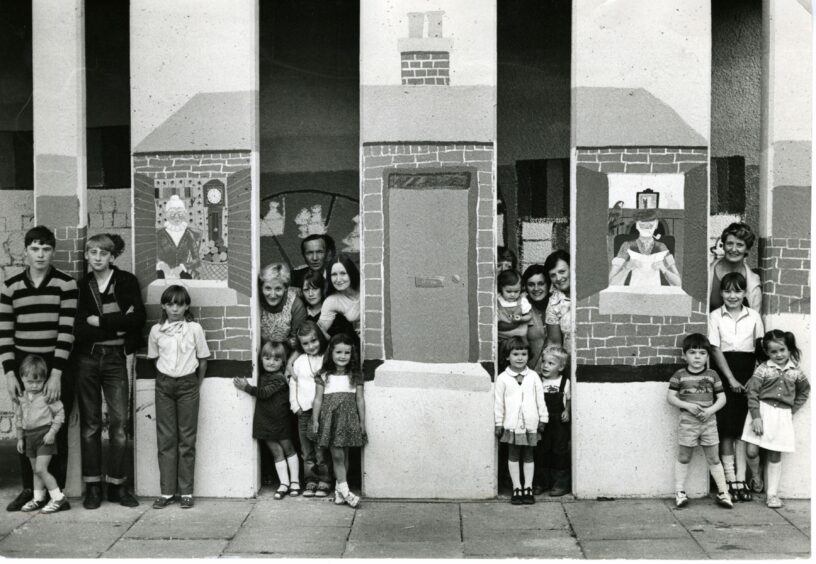
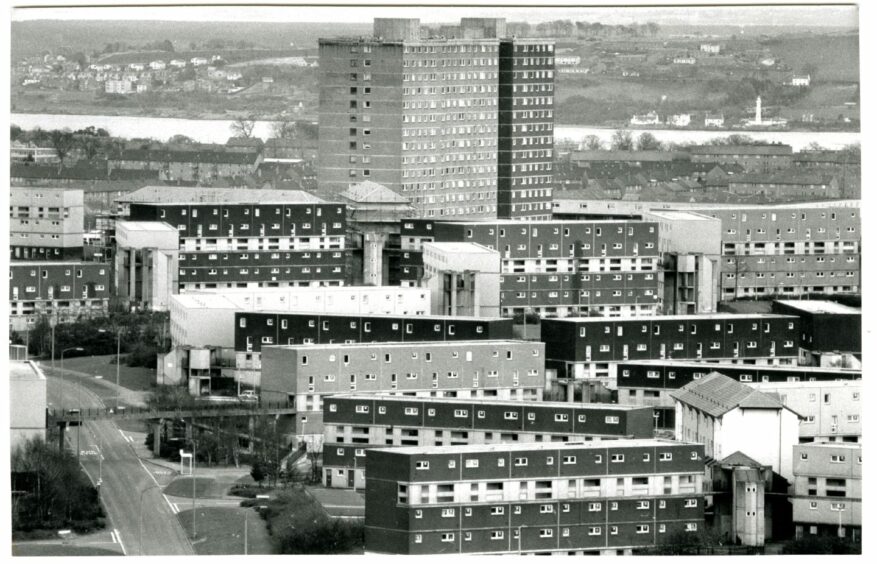
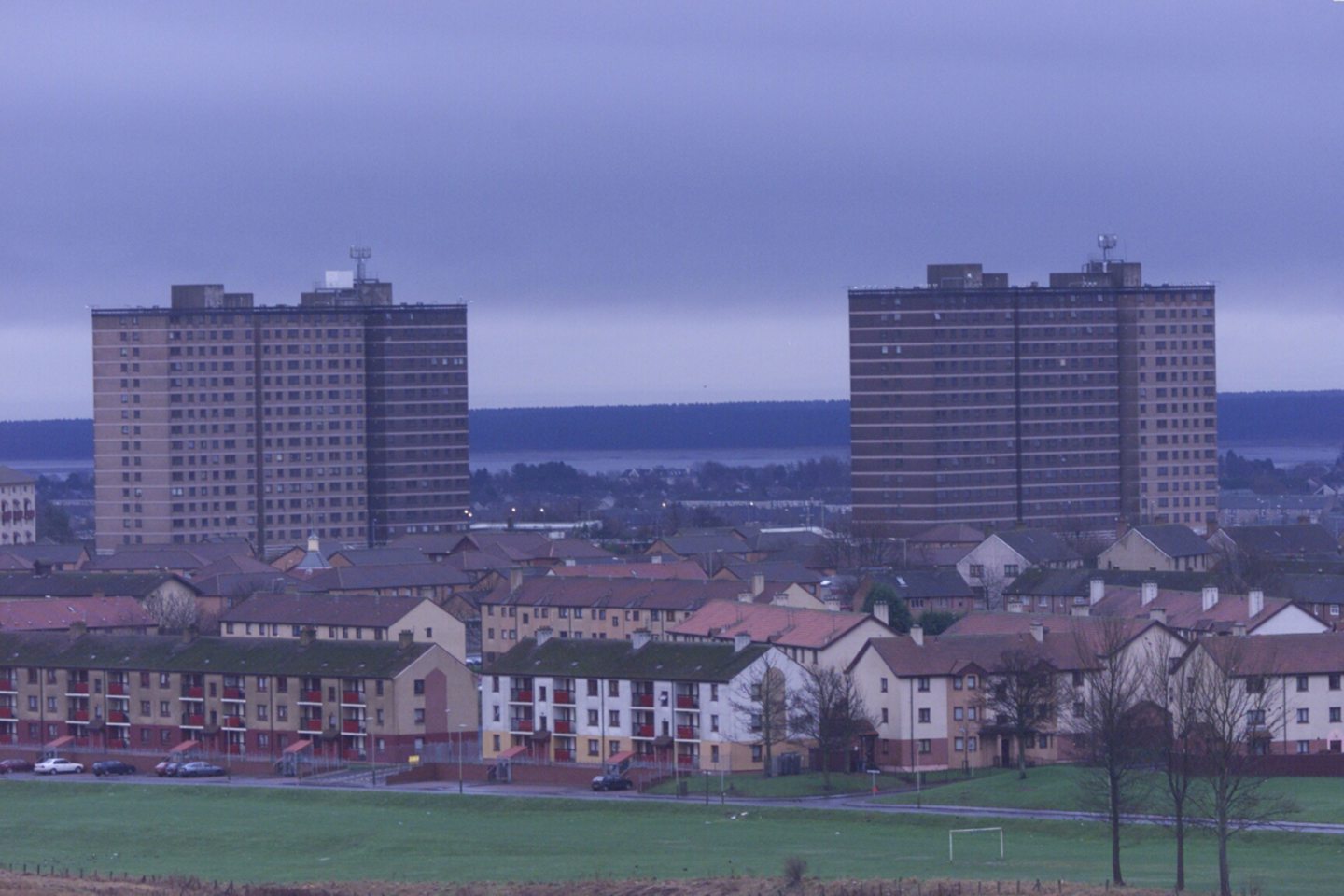
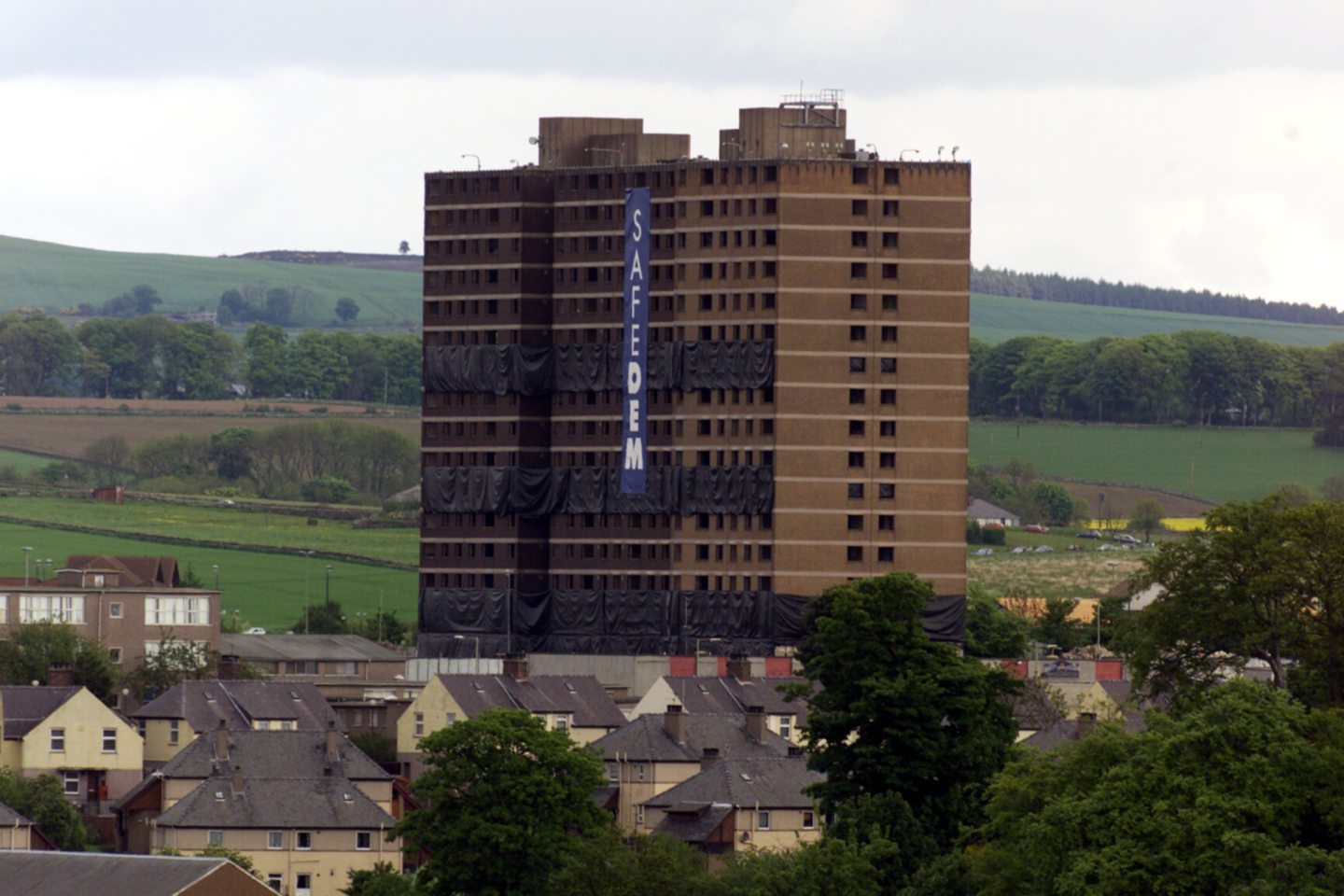
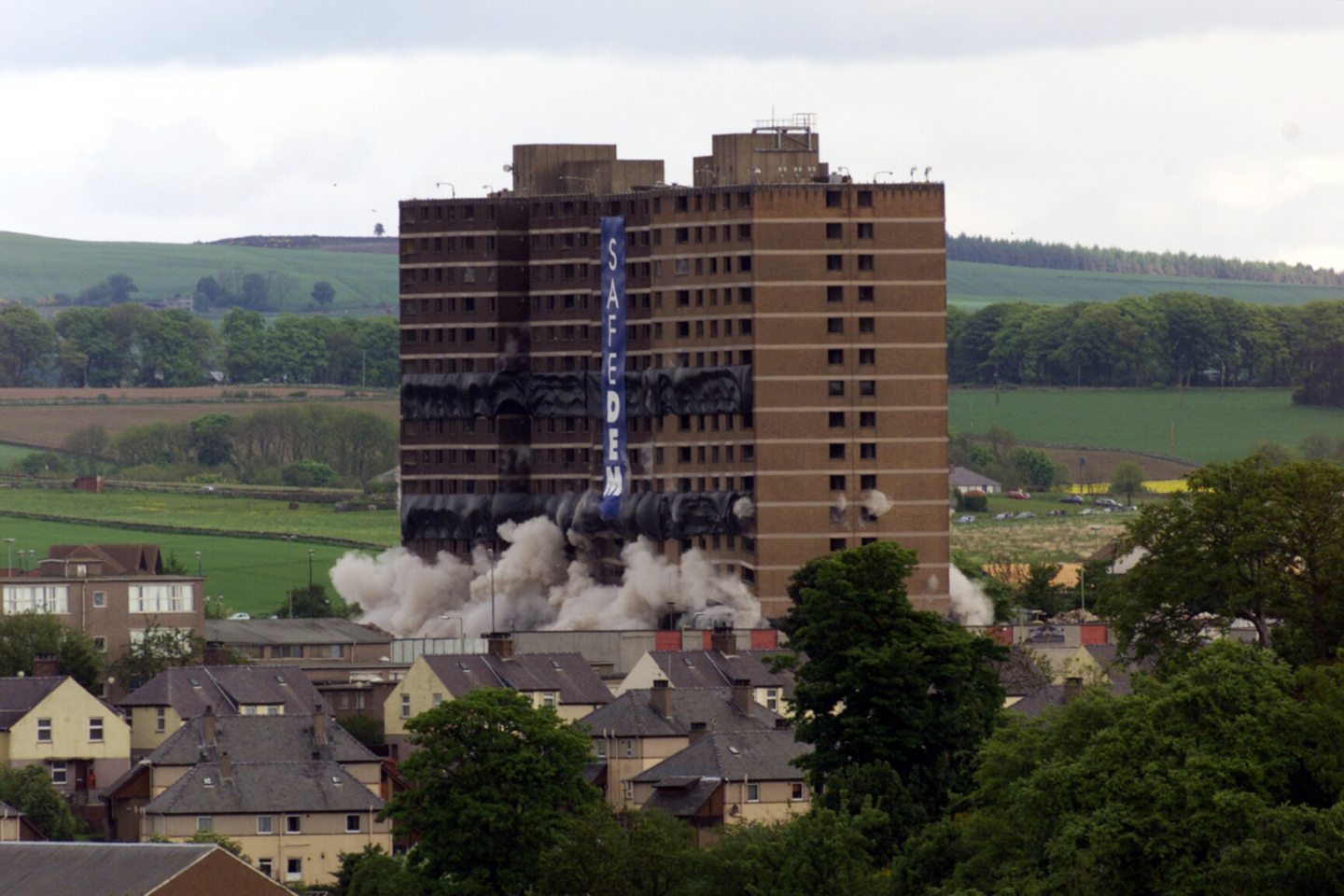
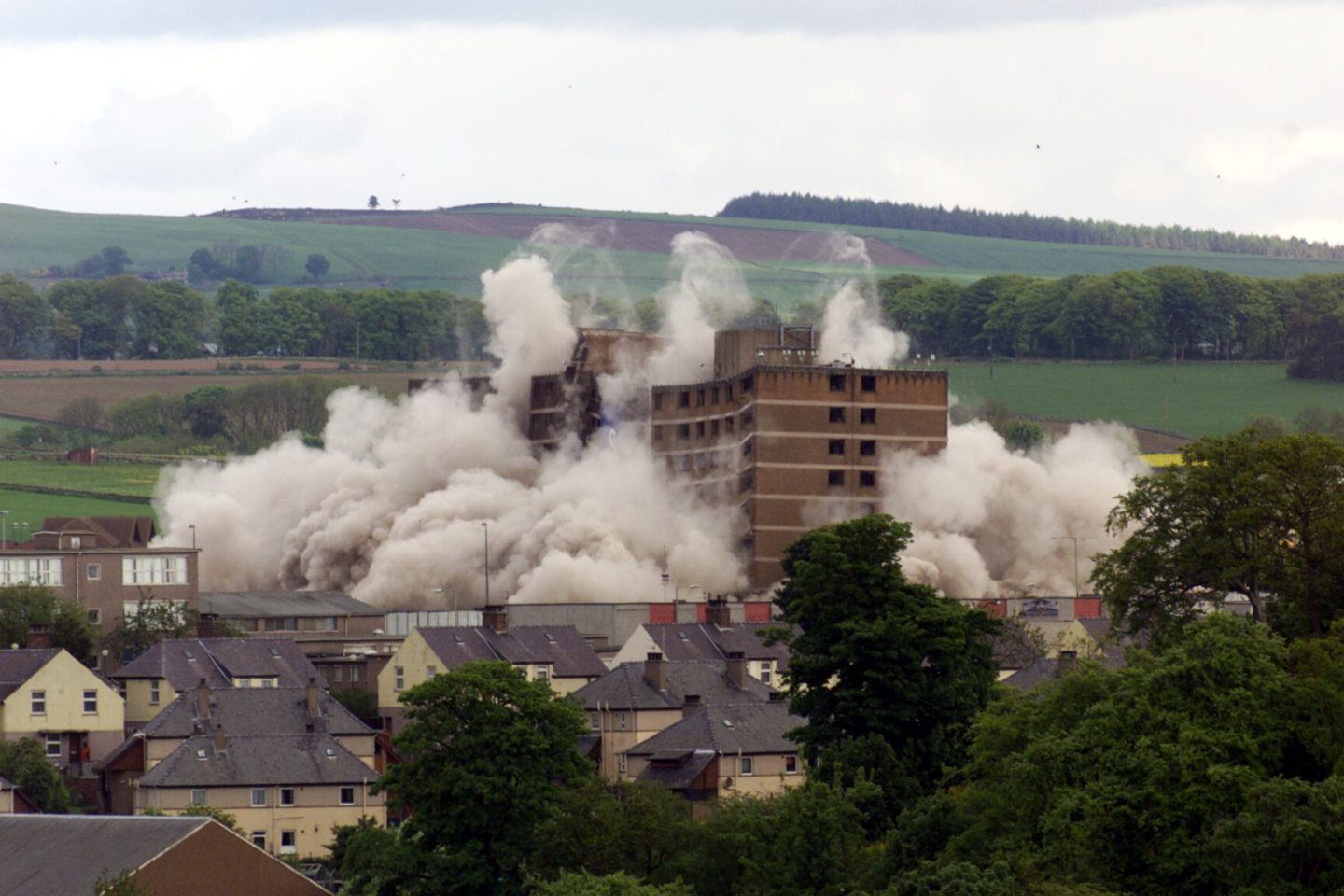
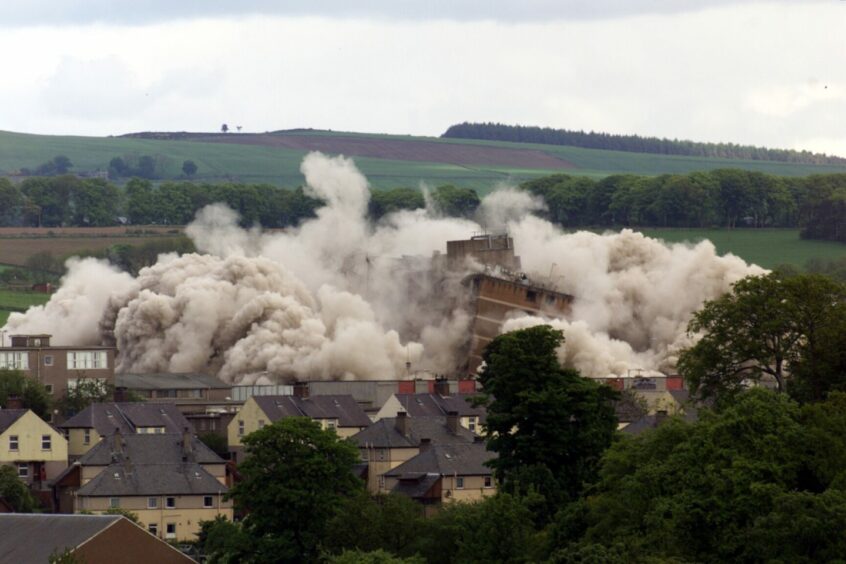
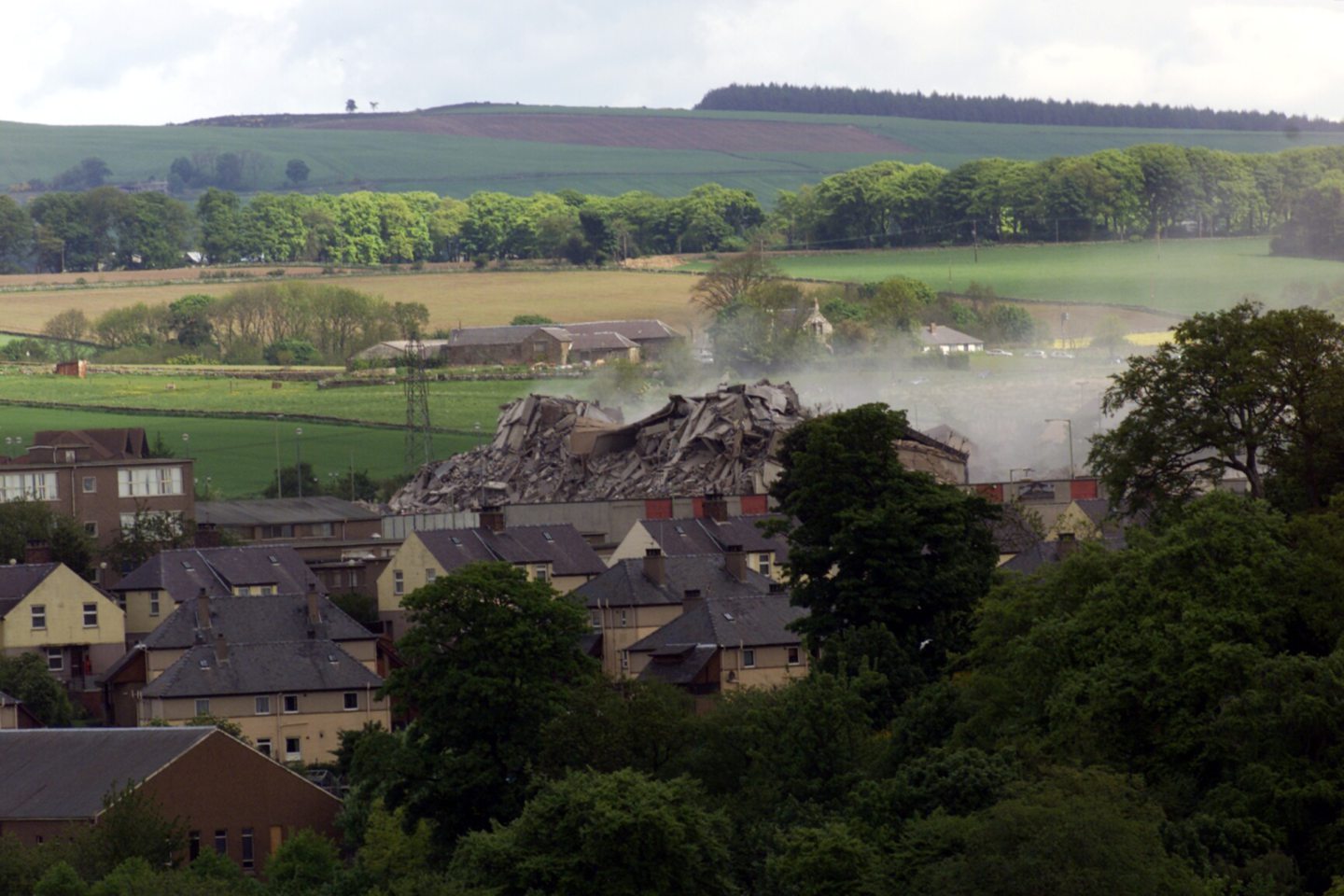










Conversation